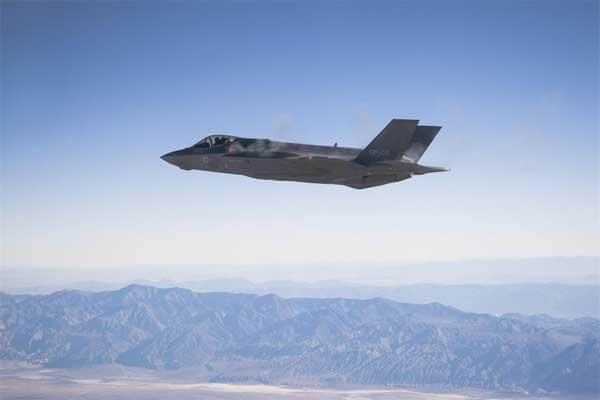The U.S. Air Force would add 4,000 more airmen to its ranks next year -- but no extra warplanes to its arsenal -- under a compromise version of the defense authorization bill.
The move would boost the Air Force's authorized end-strength for the active component to 321,000 airmen, according to a summary document released this week on the negotiated fiscal 2017 National Defense Authorization Act.
The $619 billion bill must pass both chambers of Congress and be signed by President Barack Obama before becoming law. The House may vote on the measure Friday and the Senate may do the same next week.
The Air Force in September had about 311,000 airmen serving on active duty, according to Pentagon personnel statistics. Amid the U.S.-led wars in Iraq and Afghanistan, the size of the service peaked in 2004 at nearly 377,000 airmen before beginning a steady drawdown. Last year, the service was authorized to add more airmen for the first time in six years.
Air Force Secretary Deborah Lee James in recent months has pushed for 4,000 to 8,000 more airmen, in part to address a shortage of fighter pilots and maintainers in the force.
"I am absolutely certain that we need somewhere on the order of 321,000 to 325,000 active-duty airmen," she said in an interview with Air Force Times in August.
During his Senate confirmation hearing, Air Force Chief of Staff Gen. David Goldfein this summer said 4,000 maintainers were needed to adequately keep aircraft ready for a "fight tonight" scenario.
"If we're successful this year at getting to 317,000 and we see the kind of recruiting numbers we are looking for, we will likely come back to this committee and ask you to reprogram money to allow us to get to our authorization of 321,000," Goldfein said in June. "The bulk of those airmen that we are going to bring on are going to be maintainers."
Other critical fields, such as cyber, nuclear missile and remotely piloted aircraft airmen, also could funnel in more servicemen and women in the newly agreed upon legislation.
At least for now, lawmakers appear to have prioritized funding for more service members rather than aircraft. They omitted a provision to add more F-35 Joint Strike Fighters made by Lockheed Martin Corp. and F/A-18E/F Super Hornets made by Boeing Co.
In their previous version of the bill, House lawmakers had supported funding for 11 more F-35 Joint Strike Fighters and a total of 14 F-18E/F Super Hornets "to address a critical fighter shortage," according to language from earlier this year. But their counterparts in the Senate didn't sign off on the plan.
The legislation also would seek to study a new way to manage the nearly $400 billion F-35 Joint Strike Fighter program -- the Pentagon's largest acquisition effort -- and for auditors with the Government Accountability Office -- the investigative arm of Congress -- to provide more reporting on the potentially $55 billion B-21 Long Range Strike Bomber, or LRSB, program.
-- Oriana Pawlyk can be reached at oriana.pawlyk@military.com. Follow her on Twitter at @Oriana0214.




























